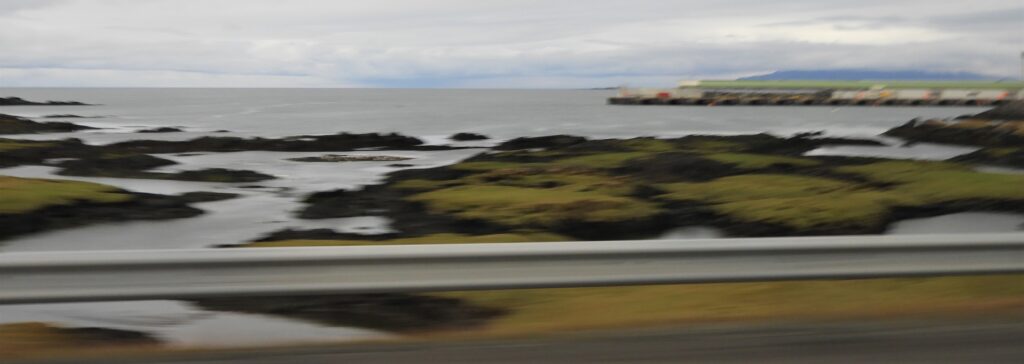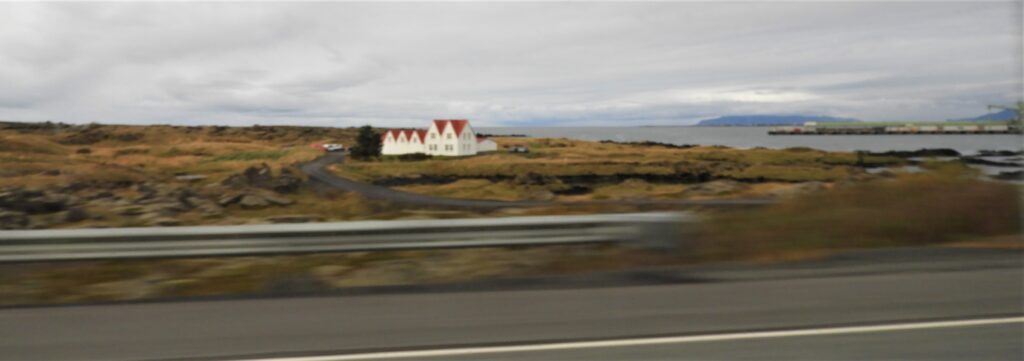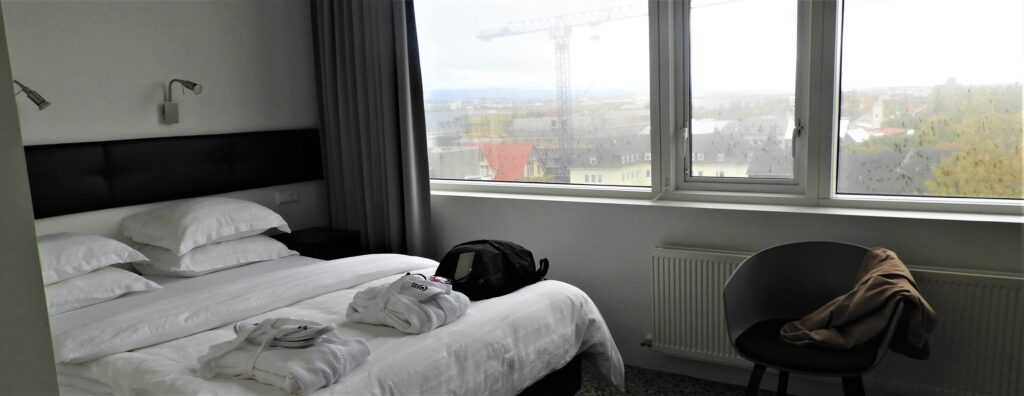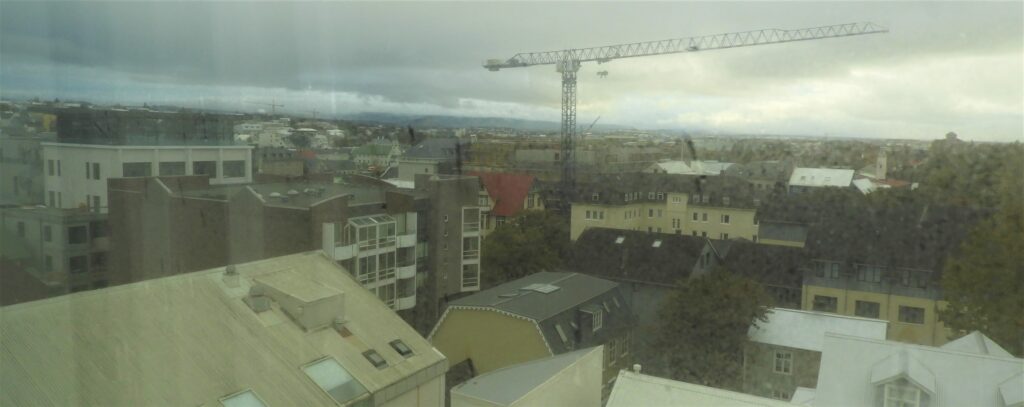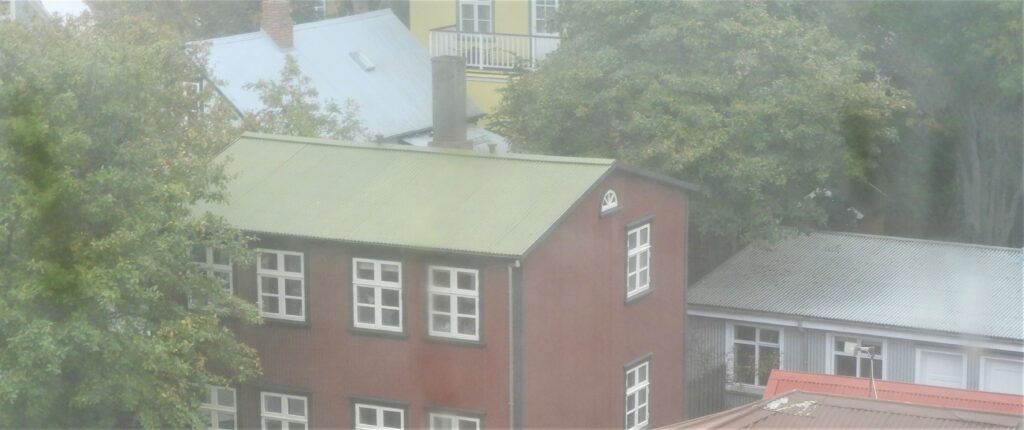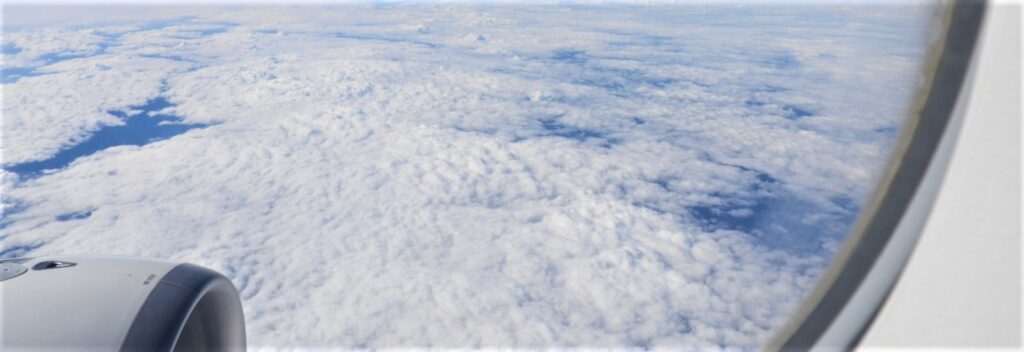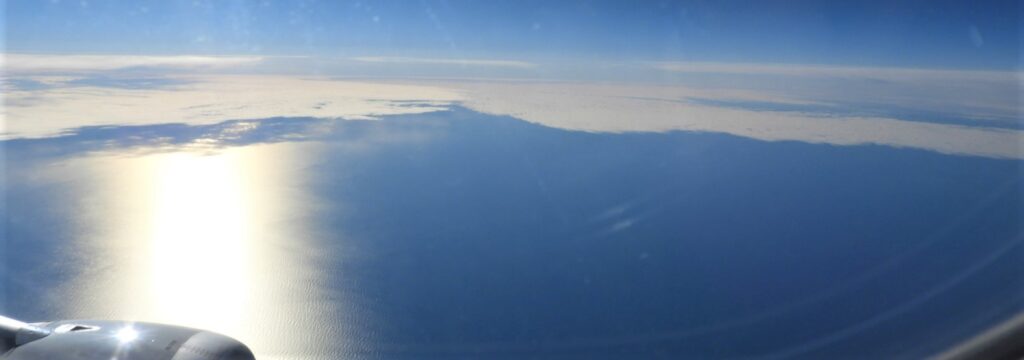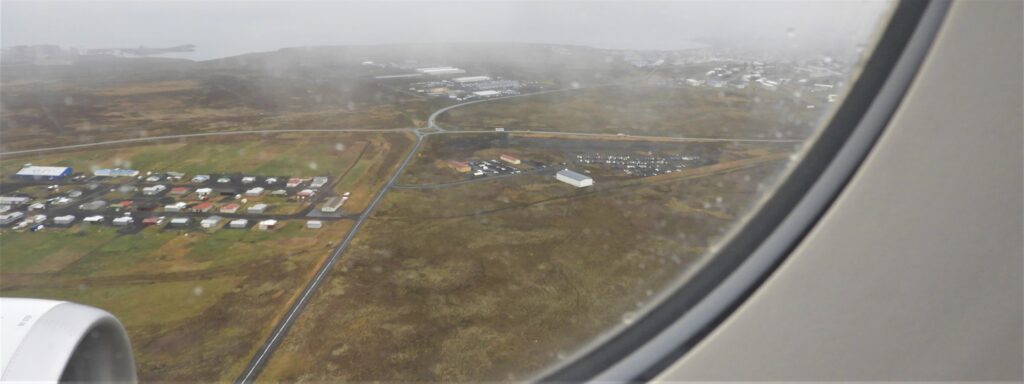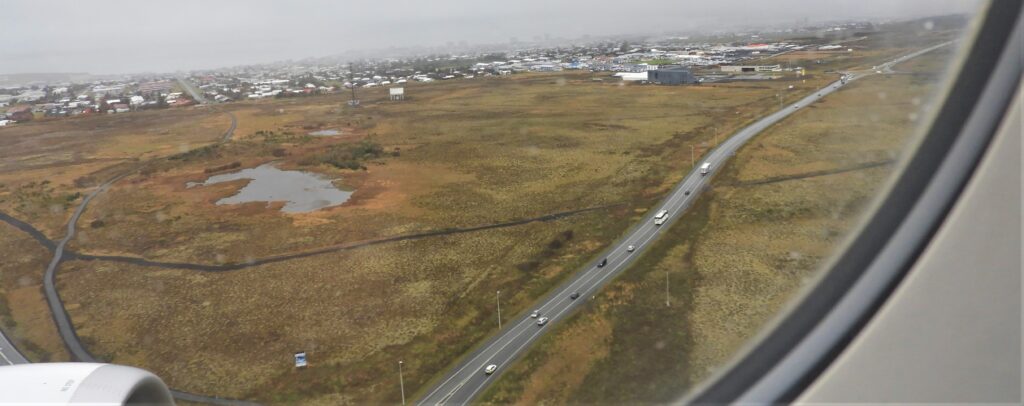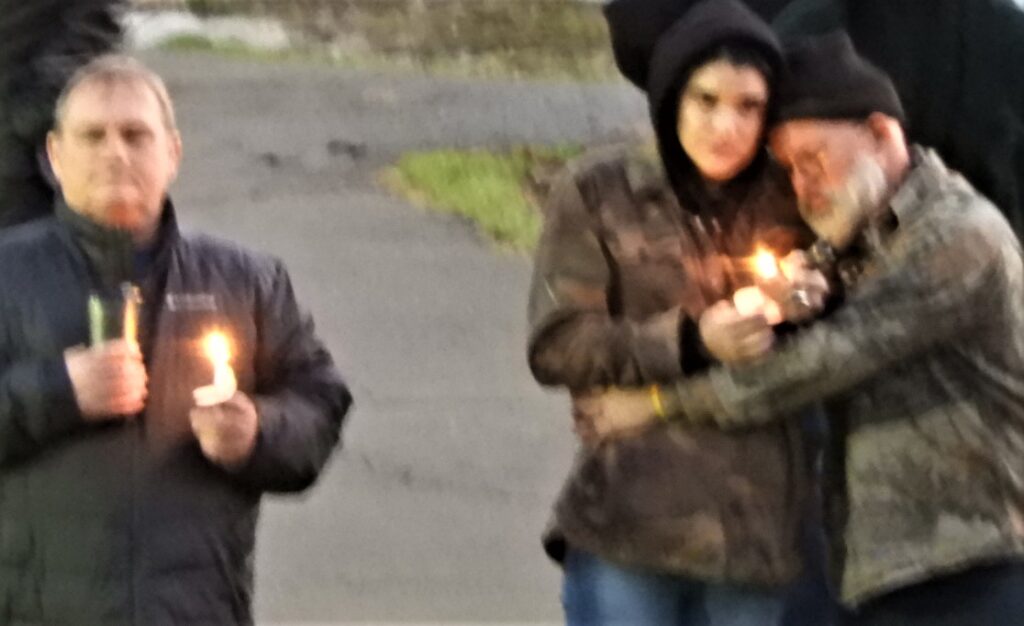Posts Tagged ‘Iceland’
» posted on Wednesday, September 28th, 2022 by Linda Lou Burton
Fifty Shades Of Gray
Linda Lou Burton posting from Central Hotels Plaza, Reykjavik, Iceland – Walter was his name. Walter welcomed us to Iceland. Actually, a young woman welcomed us first with the wheelchair, whisking us rapidly down to luggage. We’d checked our bags in Zanzibar, and luck was with us, they followed all the way to the Arctic Circle. She whisked us past Joe the cat, and his wise take on life – When nothing goes right…go left. – but no 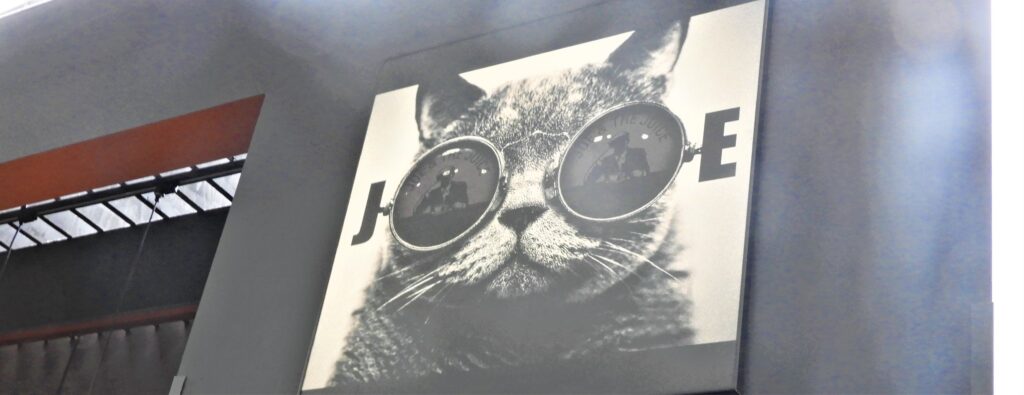
 stopping for juice. She whisked us to the front of the terminal and said “Here you are.” Taxis were rowed a distance away, but I didn’t see the Reykjavik shuttle bus I’d read about. So I asked. “Yes, there is a bus,” she explained. “It goes to a terminal downtown, then you get a taxi to your hotel. Or walk. Or you can get a taxi from here.” I looked at Rick, hmmm, taxi now or taxi later? We decided on taxi now. Walter opened the doors to his rather large, luxurious van but didn’t speak. Walter drove us to Reykjavik, 31 miles on Highway 41, alongside gray waters that were part of the Atlantic Ocean. Or was it called the Sea of Greenland right there? Greenland was off in that direction. It was gray. The skies were gray. The pavement was gray.
stopping for juice. She whisked us to the front of the terminal and said “Here you are.” Taxis were rowed a distance away, but I didn’t see the Reykjavik shuttle bus I’d read about. So I asked. “Yes, there is a bus,” she explained. “It goes to a terminal downtown, then you get a taxi to your hotel. Or walk. Or you can get a taxi from here.” I looked at Rick, hmmm, taxi now or taxi later? We decided on taxi now. Walter opened the doors to his rather large, luxurious van but didn’t speak. Walter drove us to Reykjavik, 31 miles on Highway 41, alongside gray waters that were part of the Atlantic Ocean. Or was it called the Sea of Greenland right there? Greenland was off in that direction. It was gray. The skies were gray. The pavement was gray.
And Walter seemed rather gray. He didn’t talk, at all. When we arrived at our hotel, he turned to look at us, credit card reader in hand. I handed him my card. He handed me a receipt. “I can take you back to the airport if you want to make an appointment,” he said, handing me his card. “I’ll let you know,” I replied. Walter set our bags on the sidewalk and drove away. It wasn’t just chilly, it was windy cold. It was gray. We jiggered our bags across the wet street; into the hotel, front desk. Our rooms were ready. That way. We jiggered our bags across the lobby, up the elevator. Two rooms. Peace and quiet. Black and white. Gray. The walls were gray. My window was foggy gray. I looked across the rooftops to the gray clouds beyond. 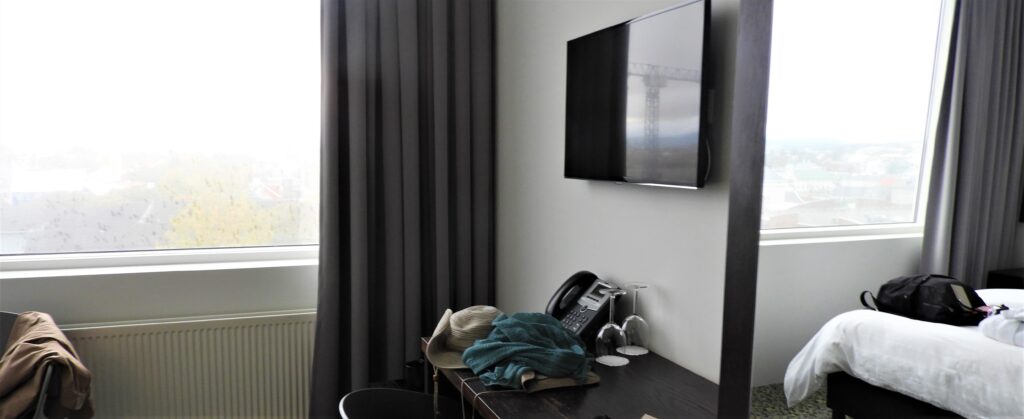
How do I know his name was Walter? It was printed on his card. So this is Iceland, huh?
Center Hotels Plaza, Reykjavik, Iceland https://www.centerhotels.com/en/hotel-plaza-reykjavik
Keflavik Airport, Reykjavik, Iceland https://www.isavia.is/en/keflavik-airport
Next Post: But Then,
» posted on Wednesday, September 28th, 2022 by Linda Lou Burton
Goldfish For Lunch
Linda Lou Burton posting from Flight # LX8300, Edelweiss Airlines, Keflavik Airport, Iceland – Got your calculator? Here’s a math problem for you. If you leave Zanzibar at 10:30 PM Tuesday and land in Zurich at 6:10 AM Wednesday; then leave Zurich at 1 PM and arrive in Iceland at 2:55 PM; and you change time zones by 3 hours overall, what time do you eat lunch? The entire issue becomes irrelevant I suppose, when you fly Edelweiss. Because they give you Goldfish to munch on any time you please! I grabbed a handful of Goldfish bags the minute they were offered and stacked them greedily in my lap.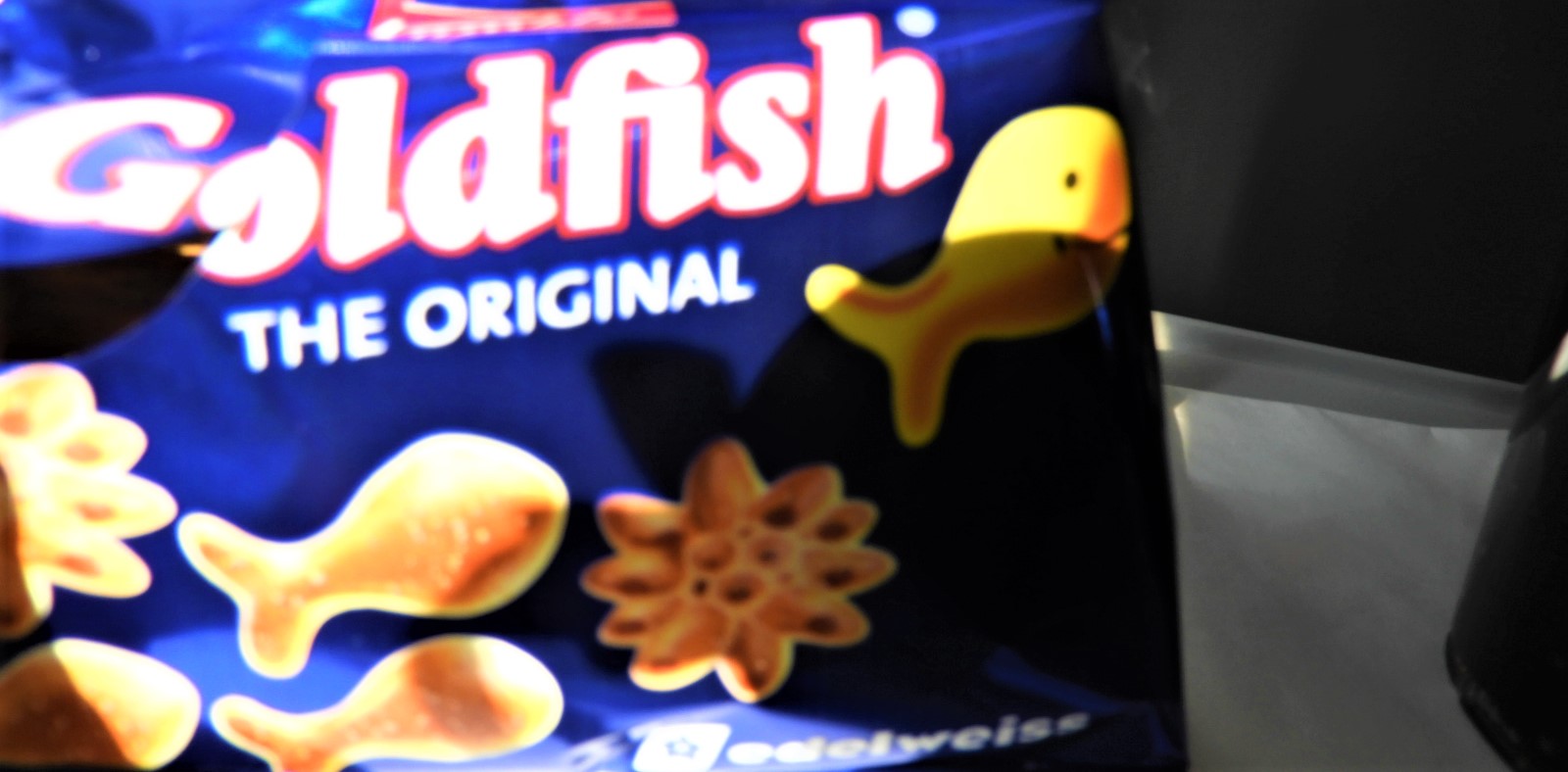
I was living in high country now; our seat row was just behind the curtain separating us from business class (a step up for sure, at least we’re breathing the same air!); I had adequate foot room, and I had a window seat! The flight time from Zurich to Reykjavik’s International Airport was under four hours, so much less daunting that the “getting into Africa” adventures had been. Rick and I both were excited, not quite sure how the climate change was going to hit us. And, for the first time, we were totally on our own. No Globus guides running interference for us or drivers aiming to honor all our whims and preferences. “Flying solo and eating Goldfish,” I laughed to Rick, looking out my window, hoping to see an Alp or two.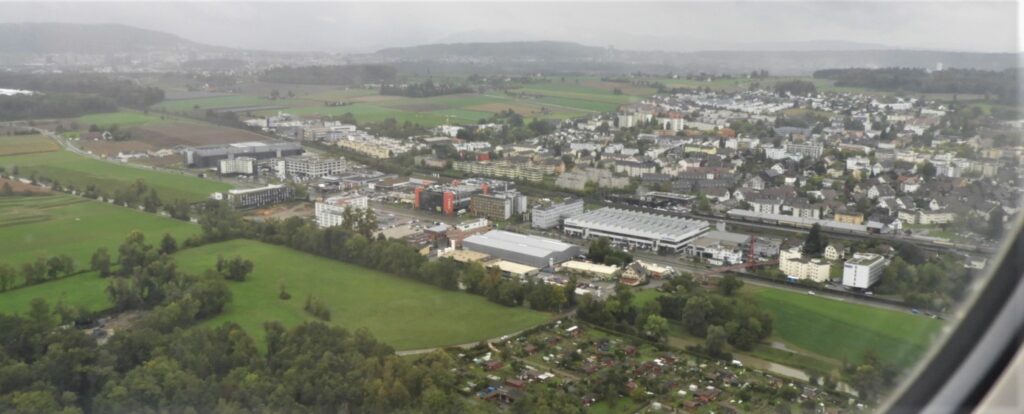
All I saw was green, the brilliant, well-tended green of well-watered farmland; houses neatly rowed in villages. No elephants, no zebras, no giraffes. We flew over the edges of Germany and France; we flew above Belgium, the Netherlands, Scotland. The North Sea. The Atlantic.
Now we’re in Icelandic territory (it’s part of Europe but you can’t get there by car!); the landscape has an unfamiliar look. The ground is a different shade of green; the houses lower; the skies grayer. There’s the airport. The attendant has collected all my empty Goldfish bags so I’m done eating now, and I can give you a surprising factoid about Reykjavik’s International Airport – Keflavik. It was built by the US military during WWII!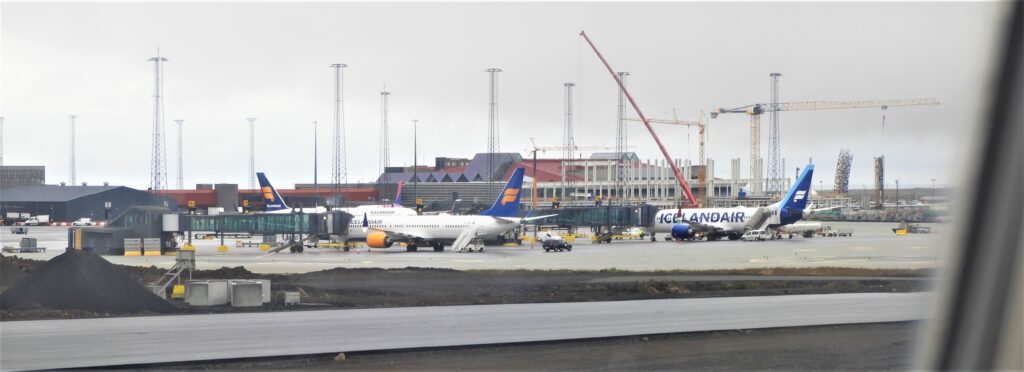
Think about that, and Iceland’s role during the war. Meanwhile, Rick and I will be hunting for a way to get to our hotel. Jackets on.
Zurich Airport https://www.flughafen-zuerich.ch/en/passengers
Keflavik Airport, Reykjavik, Iceland https://www.isavia.is/en/keflavik-airport
Next Post: Fifty Shades of Gray
» posted on Wednesday, September 7th, 2022 by Linda Lou Burton
Keeping In Touch
Linda Lou Burton posting from Little Rock, Arkansas – The days of waiting months for the slow boat to round the Horn with the mail are gone. We have cell phones now, so the main obstacle to communicating with someone on another continent is the time difference.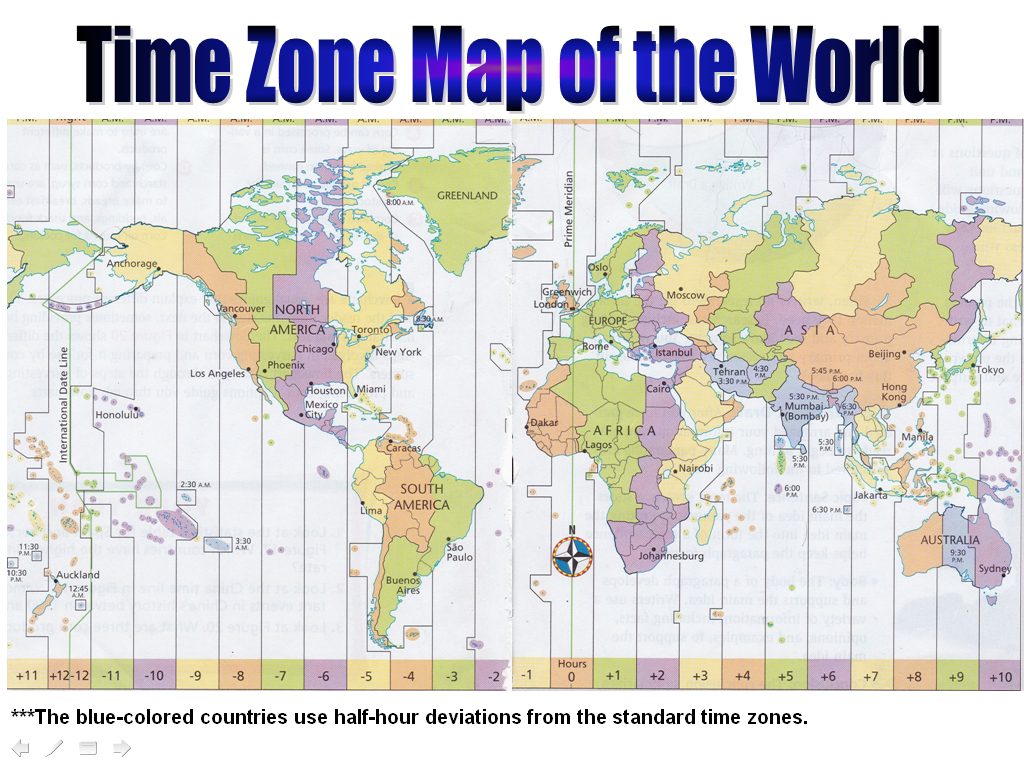
There are Time Converter websites, and Time Clock apps, if you can’t do the math about the GMT + or -. No point in calling someone in the middle of their sleepy time. So know that first. I live in Arkansas, smack in the Central Time Zone along with Chicago, and Houston. When we get to Kenya, and Tanzania, we’ll be on the same time as Moscow, and Madagascar. In Frankfurt, and Zurich, where we change planes, we’ll be in sync with Rome, and when in Iceland, well, it’s all too confusing, the way the powers-that-be have set it up with those crooked lines. Just Google it.
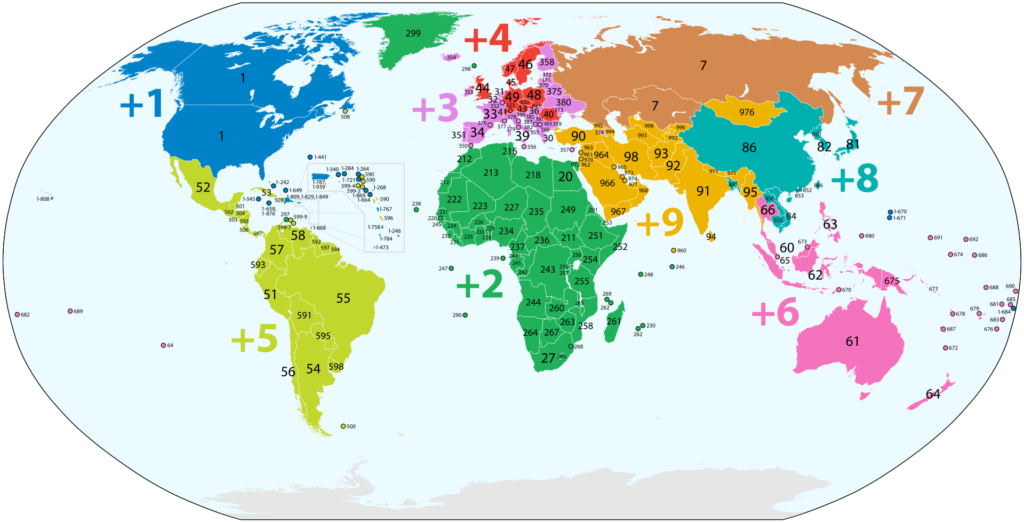 And then there’s the matter of Country Calling Codes. Yes, there is an International Telecommunication Union (the ITU) and member countries are assigned their own special number. The USA is #1. Remember that. Kenya is 254, Tanzania is 255, and Iceland is 354. You have to get through to the country before dialing the number of the place within the country. But oh, you have to dial OUT of the country you’re in before you can even do that. That number is 011. So, calling from the US to our hotel in Nairobi is 011-254-732124000. Or let your Android app figure it out.
And then there’s the matter of Country Calling Codes. Yes, there is an International Telecommunication Union (the ITU) and member countries are assigned their own special number. The USA is #1. Remember that. Kenya is 254, Tanzania is 255, and Iceland is 354. You have to get through to the country before dialing the number of the place within the country. But oh, you have to dial OUT of the country you’re in before you can even do that. That number is 011. So, calling from the US to our hotel in Nairobi is 011-254-732124000. Or let your Android app figure it out.
Lastly, it’s wise to know how to contact the U S Embassy in other countries, in case of some horrid disaster or unpredictable event when you can’t get through to us at all. Like maybe another volcano erupting in Iceland, only this time really HUGE, like the Mt St Helen’s blow-up in 1980 just as we were moving to Seattle.
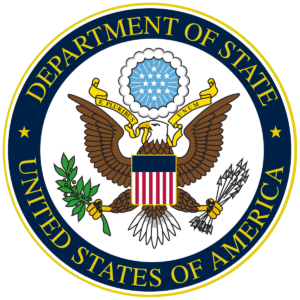 The US Department of State likes to look after its citizens when they travel; we’re registered with our Embassy in each of the three countries we’re visiting – they know when to expect us, are available to help us with any difficulties we may experience while there, and know how to get in touch with our family should the need arise.
The US Department of State likes to look after its citizens when they travel; we’re registered with our Embassy in each of the three countries we’re visiting – they know when to expect us, are available to help us with any difficulties we may experience while there, and know how to get in touch with our family should the need arise.
- KENYA: U.S. Embassy Nairobi, United Nations Avenue Nairobi, P. O. Box 606 Village Market, 00621 Nairobi, Kenya, 254 20 363-6000
- TANZANIA: U.S. Embassy in Dar es Salaam, 686 Old Bagamoyo Road, Msasani, Dar es Salaam, Tanzania, 255-22-229-4000
- ICELAND: U.S. Embassy in Reykjavik, Laufásvegur 21, 101 Reykjavík, 354 595 2200.
There you have it, we’re only a phone call away. Just don’t wake me up, please.
» posted on Monday, September 5th, 2022 by Linda Lou Burton
Warm Puppies
 Charles Schulz, who had a knack for explaining the obvious, once wrote a book about happiness. Remember Happiness is a Warm Puppy? It doesn’t take more description than that to know what he’s talking about! Just saying those words makes you feel happy, unless you’re really allergic to dogs, or once was terrorized by a German shepherd.
Charles Schulz, who had a knack for explaining the obvious, once wrote a book about happiness. Remember Happiness is a Warm Puppy? It doesn’t take more description than that to know what he’s talking about! Just saying those words makes you feel happy, unless you’re really allergic to dogs, or once was terrorized by a German shepherd.
For the last ten years, statistical PROOF of happiness has been the goal of a group of learned, detail-specific folks who have been asking questions and analyzing data in 150 countries. And producing The World Happiness Report, giving us a picture of our global joy, or unrest.
What exactly do they consider? Some basic things you’d expect based on where you live: life expectancy in your country, GDP per capital in terms of purchasing power, freedom to make choices about what you do with your life, perceptions of corruption in your government, and amount of social support. Personal attitudes and experiences come into play as well: did you do something yesterday that made you laugh? Did you do something interesting, or learn something new? Did you donate money to a charity? Do you have friends you can count on?
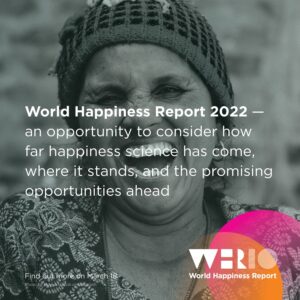 I won’t get into the statistical methods used, or the pages and pages (and pages) of data, but here’s a link to the entire project: https://worldhappiness.report/ and I encourage you to take a look. It’s fascinating! This year in particular, because they focused on the impact of COVID. With the world entering the third year of the pandemic, the report has three areas of focus in 2022: looking back; looking at how people and countries are doing in the face of COVID; and looking ahead to how the science of well-being is likely to evolve in the future.
I won’t get into the statistical methods used, or the pages and pages (and pages) of data, but here’s a link to the entire project: https://worldhappiness.report/ and I encourage you to take a look. It’s fascinating! This year in particular, because they focused on the impact of COVID. With the world entering the third year of the pandemic, the report has three areas of focus in 2022: looking back; looking at how people and countries are doing in the face of COVID; and looking ahead to how the science of well-being is likely to evolve in the future.
On the positive side, the most remarkable change was the global upsurge in benevolence in 2021. In every global region, there have been large increases in the proportion of people who give money to charity, help strangers, and do volunteer work. COVID also demonstrated the crucial importance of trust for human well-being. Deaths from COVID during 2020 and 2021 were markedly lower in those countries with higher trust in public institutions, and where inequality is lower.
The happiest countries in 2022? Finland, Denmark, Iceland, Switzerland, and the Netherlands make up the Top Five. The US came in at #16 – despite our low rankings in safety, we’re a country with a high life expectancy (78 for men, 83 for women), and despite our perceptions of too-low wages, a per capita GDP of over $62K. Much to be happy about!
Kenya and Tanzania ranked quite low according to those measures; life expectancy in both countries is in the low 60s for men and women; per capita GDP is just over $3,000, and about 30% of the population is considered undernourished. But in measures of attitude, the 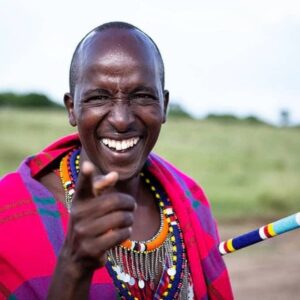 people of these countries are an example of the highest form of happiness – the ability to appreciate what they have. Kenyans are a gregarious, hospitable, easy-going, and intensely curious people. They take pleasure in meeting visitors and finding out about their way of life. Undungu, translated as “brotherhood,” conveys the spirit of Tanzanians; the idea of generosity, consideration, and compassion towards both family, and community. Any visitor to the country can expect to hear the Swahili word Karibu frequently. It means “welcome.”
people of these countries are an example of the highest form of happiness – the ability to appreciate what they have. Kenyans are a gregarious, hospitable, easy-going, and intensely curious people. They take pleasure in meeting visitors and finding out about their way of life. Undungu, translated as “brotherhood,” conveys the spirit of Tanzanians; the idea of generosity, consideration, and compassion towards both family, and community. Any visitor to the country can expect to hear the Swahili word Karibu frequently. It means “welcome.”
And that’s a warm puppy, for sure.
The World Happiness Report is a publication of the Sustainable Development Solutions Network, powered by the Gallup World Poll data.
» posted on Sunday, September 4th, 2022 by Linda Lou Burton
World Peace
Linda Lou Burton posting from Little Rock, Arkansas – One more post about dangers. Or should I say, SAFETY. Are you familiar with the Global Peace Index (GPI), an annual report produced by the Institute for Economics and Peace? This report presents the most comprehensive data-driven analysis to date on trends in peace, its economic value, and how to develop peaceful societies. The GPI covers 99.7% of the world’s population and 163 countries, using 23 qualitative and quantitative indicators from highly respected sources, and measures the state of peace across three domains:
- the level of Societal Safety and Security
- the extent of Ongoing Domestic and International Conflict
- the degree of Militarization.
If you’re the least bit interested in worldwide trends, go to their website for an in-depth look at the findings, and a look at the worldwide map. https://www.visionofhumanity.org/maps/#/
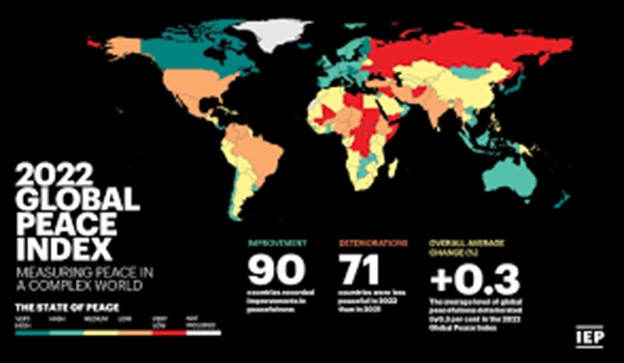 I checked this site as I thought about travel to Africa, and other parts of the world I plan to visit. The TOP TEN SAFEST COUNTRIES in the world in 2022, according to this study, are:
I checked this site as I thought about travel to Africa, and other parts of the world I plan to visit. The TOP TEN SAFEST COUNTRIES in the world in 2022, according to this study, are:
- Iceland. 2. New Zealand. 3. Ireland. 4. Denmark. 5. Austria. 6. Portugal. 7. Slovenia. 8. Czech Republic. 9. Singapore. 10. Japan
 Iceland has held the position of “Most Peaceful Country” since 2008. Afghanistan is the least peaceful country for the fifth consecutive year, at the bottom of the list of 163 countries in the world. Yemen, Syria, Russia and South Sudan complete the bottom five. Noted this year:
Iceland has held the position of “Most Peaceful Country” since 2008. Afghanistan is the least peaceful country for the fifth consecutive year, at the bottom of the list of 163 countries in the world. Yemen, Syria, Russia and South Sudan complete the bottom five. Noted this year:
- Deaths from external conflict recorded a sharp deterioration driven by the Russian invasion of Ukraine.
- The rise in costs has increased food insecurity and political instability globally, with Africa, South Asia and the Middle East under greatest threat.
- The political terror scale, political insecurity, neighboring country relations, refugees and IDPs reached their worst score since the inception of the GPI.
Seven of the ten countries at the TOP of the Global Peace Index are in Europe.
The safety rankings of the countries we’ll be visiting and returning to:
- Iceland – #1
- Tanzania – #86
- Kenya – #120
- United States – #129
This photo was taken February 7, 2022 with a zoom lens from my bedroom window, as a Memorial Service was conducted in the City Park behind my house. A young man was killed in a shoot-out near the Park a few weeks earlier. A large crowd attended the Memorial Service, lighting candles and offering prayers for better community relations in Little Rock. I have lost count of the shootings in Little Rock this year alone.
I too pray for peace – in my community, my country, and my world.
» posted on Wednesday, August 31st, 2022 by Linda Lou Burton
About Iceland
Linda Lou Burton posting from Little Rock, Arkansas – I know you’re wondering – why on earth would anyone go almost to the Arctic Circle after journeying to the Equator? There’s a good story behind it, which I’ll save for later. But top reason to go to Iceland is much the same reason for going to Africa: I’ve wanted to for a very, very long time. And since you have to go through Europe to get back to the US from Africa, what’s a few hours more flying time to hop a bit further north? Here are some things you need to know.
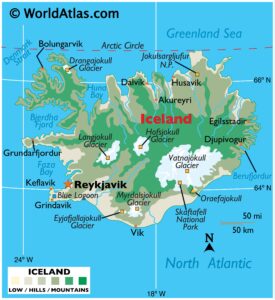 How big is Iceland? Where is it? What does it look like?
How big is Iceland? Where is it? What does it look like?
Iceland is about the size of the US state of Virginia. Technically a part of Europe, it is perched in the North Atlantic between Norway and Greenland, just brushing the Arctic Circle. It is the biggest part of the Mid-Atlantic Ridge that rises above sea level, and its central volcanic plateau erupts frequently. The interior consists of a plateau of sand and lava fields, mountains, and glaciers. Many rivers flow to the sea through the lowlands. Altogether a striking landscape of breathtaking waterfalls, bubbling geothermals, and rugged coastline.
How about Iceland’s weather?
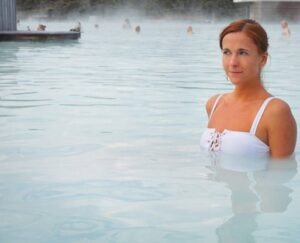 With a name that speaks of ICE, and a location not that far from the North Pole, Iceland has a surprisingly temperate climate. The Gulf Stream gets credit for that, plus the fact that Iceland sits atop a massive magma hot spot called the Iceland Plume. Outdoor swimming goes on year-round thanks to geothermal pools; houses are heated that way as well. Still, expect frequent weather changes in a day’s time; layer up. Last-day-of-August highs and lows: Little Rock 90-73; Reykjavik 53-44.
With a name that speaks of ICE, and a location not that far from the North Pole, Iceland has a surprisingly temperate climate. The Gulf Stream gets credit for that, plus the fact that Iceland sits atop a massive magma hot spot called the Iceland Plume. Outdoor swimming goes on year-round thanks to geothermal pools; houses are heated that way as well. Still, expect frequent weather changes in a day’s time; layer up. Last-day-of-August highs and lows: Little Rock 90-73; Reykjavik 53-44.
Who lives in Iceland?
Iceland’s people population last year was estimated at 376,248; 89% of that is of Icelandic heritage. Most Icelanders are descendants of Norse and Gaelic settlers. Icelandic, a North Germanic language, is descended from Old West Norse. Rather than using family names, as is the custom in most Western nations, Icelanders carry patronymic or matronymic surnames, and refer to one another by their given name. Patronymic last names are based on the first name of the father; matronymic names on the first name of the mother. These follow the person’s given name, e.g. Elísabet Jónsdóttir (“Elísabet, Jón’s daughter, ” Jón, being the father), or Ólafur Katrínarson (“Ólafur, Katrín’s son,” Katrín being the mother). 
As to the animal population, before humans settled in the 9th century, Iceland had only one land mammal, the Arctic fox. The rest of the creatures were either birds or marine animals. A millennium later, a wealth of life has adapted to the harsh climate, one of the most unique being the sturdy Icelandic horse, its bloodline so protected no imported horses are allowed. Sheep roam freely, reindeer too, but it’s the marine life that tops the list – whales, seals, dolphins, and 340 species of fish.
How does Iceland promote itself on its Visit Iceland site?
The coolest thing to see in Iceland today is a hot volcano. The Fagradalsfjall Volcano system awoke again on August 3, 2022, and is calm enough to sit close by and watch it spew and glow. Or you can go whale watching, berry picking, ice-cave exploring or simply sit on a tour bus and be driven from point to glorious point. Downtown Reykjavik is a walker’s paradise, plazas and parks and hop-on/hop-off buses. There are 266 museums in Iceland, 130 volcanoes, and an impressive array of restaurants. Seafood anyone?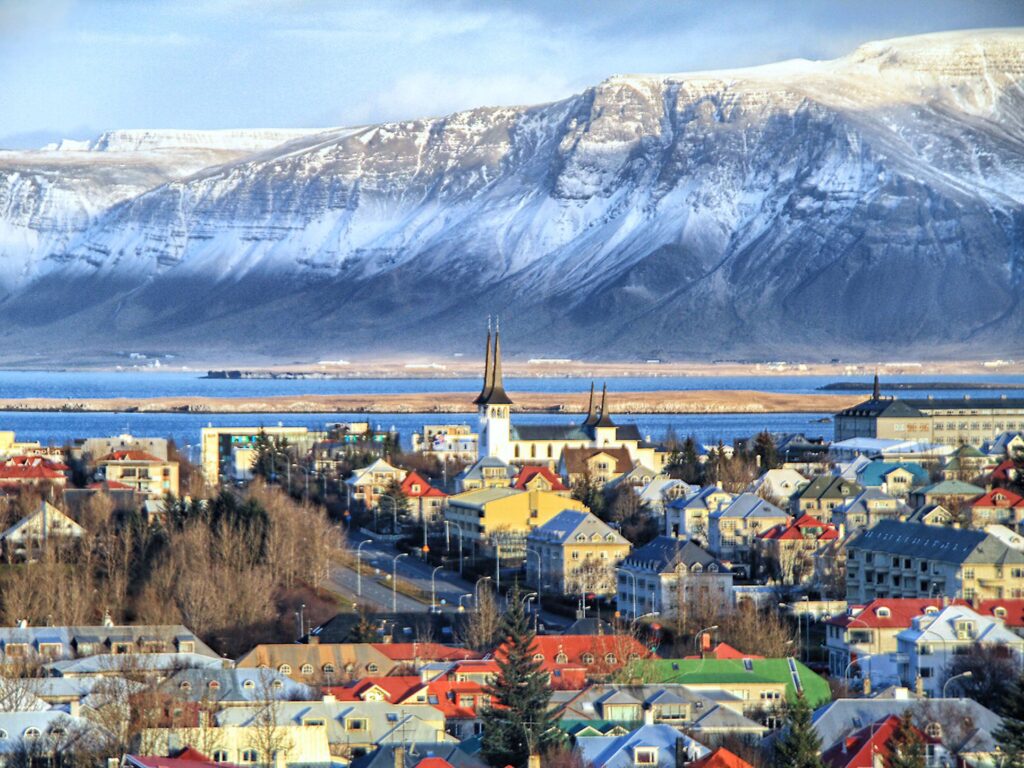
» posted on Wednesday, August 17th, 2022 by Linda Lou Burton
This Is The One I Want!
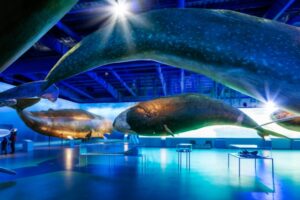 Originally published August 11, 2020 by Linda Lou Burton posting about Reykjavik, Iceland from Little Rock, Arkansas – Yesterday we saw a lot of Reykjavik. We ate the famous hot dogs, we visited the Whales of Iceland museum, and we strolled the streets getting pictures of the street art (it really is everywhere) and the really pointy church; different styles of architecture for sure. We even had time to visit the US Embassy and register our names. But the hardest thing – we had to pick our next-day tour.
Originally published August 11, 2020 by Linda Lou Burton posting about Reykjavik, Iceland from Little Rock, Arkansas – Yesterday we saw a lot of Reykjavik. We ate the famous hot dogs, we visited the Whales of Iceland museum, and we strolled the streets getting pictures of the street art (it really is everywhere) and the really pointy church; different styles of architecture for sure. We even had time to visit the US Embassy and register our names. But the hardest thing – we had to pick our next-day tour.
I’ve been on a submarine tour in Hawaii with Kayla (Yellow on the Submarine) https://capitalcitiesusa.org/?p=2424, and a circle-the-island tour and even an inside-the crater tour; and hula dancing of course. Sam and I spent a day with sled dogs and mushers in Alaska (Dog Day Afternoon) https://capitalcitiesusa.org/?p=4895, we also went whale watching (and saw whales!), and glacier spotting, driving every paved road in Juneau. Oh, a salmon fishery too. But we had ten days to play on those trips; here we’ve only got ONE FULL 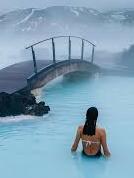 DAY to tour Iceland. And Iceland offers a literal buffet of touring opportunities. This tiny county with a population of 364,134 people and an area of 40,000 square miles is nothing short of unbelievable in “things to do.” There are Snorkeling Tours and Secret Lagoon Tours; Ice
DAY to tour Iceland. And Iceland offers a literal buffet of touring opportunities. This tiny county with a population of 364,134 people and an area of 40,000 square miles is nothing short of unbelievable in “things to do.” There are Snorkeling Tours and Secret Lagoon Tours; Ice  Cave Tours and Glacier Hikes; Kayaking, Snowmobiling, Horseback Riding and even just plain Sightseeing Tours. We quickly ruled out the Golden Circle Tour – it covers a lot of territory, circling the island, but it meant we’d spend a lot of time riding the bus.
Cave Tours and Glacier Hikes; Kayaking, Snowmobiling, Horseback Riding and even just plain Sightseeing Tours. We quickly ruled out the Golden Circle Tour – it covers a lot of territory, circling the island, but it meant we’d spend a lot of time riding the bus.
Sam was interested in snorkeling; “Listen to this – Join one of our snorkeling tours to Silfra Fissure, the only place in the world where you can snorkel between two continental plates. Amazingly, there are places within Silfra where it is possible to touch the rock on either side.”
Snorkel between two continental plates!
Kayla spotted a hiking tour; “Listen to this – Hike to the colorful Highlands, a unique bubbling geothermal wonderland with caramel color peaks, soothing hot springs, rambling lava flows and clear blue lakes; located in Fjallabak Reserve in the remote highlands of Iceland.”
Hot Springs and Lava Flows!
They both shook their heads. Too hard to gather the underwater gear needed; too much time in one spot; hiking is slow; great tours, but too limited.
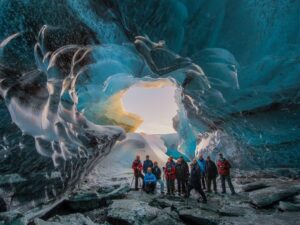 “I really want to see the ice caves,” Kayla said then, scanning the list. “Listen to this — Katla Ice Cave (Under The Volcano) Tour. Jump in a Super Jeep, strap on your crampons and step into the mighty glaciers and ice caves of South Iceland. Hike across the Myrdalsjokull glacier, then visit the amazing blue and black ice cave of Kötlujökull glacier on Mt. Katla. Enchanting glaciers and mountains surround us along the way. We stop near the roots of Kötlujökull glacier and the view is otherworldly. Crampons and helmets on, a short walk to the opening of the ice cave. Beautiful layers of different colored ice and volcanic ash paint impressive stripes in the glacier. Your guide tells the history of the glacier, the ice cave and the area around it. Back out from the glacier we look for smaller accessible ice caves
“I really want to see the ice caves,” Kayla said then, scanning the list. “Listen to this — Katla Ice Cave (Under The Volcano) Tour. Jump in a Super Jeep, strap on your crampons and step into the mighty glaciers and ice caves of South Iceland. Hike across the Myrdalsjokull glacier, then visit the amazing blue and black ice cave of Kötlujökull glacier on Mt. Katla. Enchanting glaciers and mountains surround us along the way. We stop near the roots of Kötlujökull glacier and the view is otherworldly. Crampons and helmets on, a short walk to the opening of the ice cave. Beautiful layers of different colored ice and volcanic ash paint impressive stripes in the glacier. Your guide tells the history of the glacier, the ice cave and the area around it. Back out from the glacier we look for smaller accessible ice caves 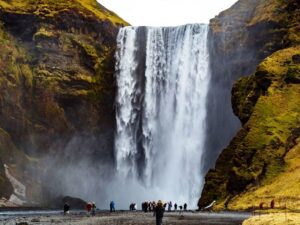 before returning to our super truck. Then we’ll swing by some majestic waterfalls — the Eerie waterfall of Skógafoss which is the inspiration to dozens of folklore tales. Hike up the right side of the waterfall to see the troll’s face that stares at the waterfall for all eternity after forgetting time and turning into stone. Stop at the stunning Seljalandsfoss waterfall, the one you can walk behind; it is located on the Seljalands River which flows from the famous volcano, Eyjafjallajökull! Back in Reykjavik around 8:00 p.m. Make sure to bring your camera! “
before returning to our super truck. Then we’ll swing by some majestic waterfalls — the Eerie waterfall of Skógafoss which is the inspiration to dozens of folklore tales. Hike up the right side of the waterfall to see the troll’s face that stares at the waterfall for all eternity after forgetting time and turning into stone. Stop at the stunning Seljalandsfoss waterfall, the one you can walk behind; it is located on the Seljalands River which flows from the famous volcano, Eyjafjallajökull! Back in Reykjavik around 8:00 p.m. Make sure to bring your camera! “
This is the one I want! said Kayla.
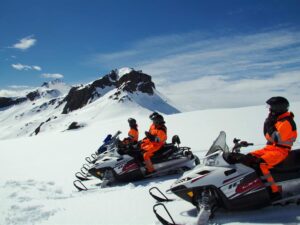 “Too much hiking,” Sam said. “Listen to this one — Combine Snowmobiling on Langjökul Glacier with an Ice Cave Exploration. Pickup up in Reykjavik or Gullfoss Café, head to Langjökull Glacier in the Icelandic Highlands in our super truck. From here you can see Eiríksjökull Glacier (the highest mountain in west Iceland), Hofsjökull Glacier and the Kerlingafjöll Mountains. Your certified glacier guide provides overalls, helmet and all the gear you need, gives you a safety briefing and snowmobile driving instructions. You are then ready to ride – your stunning 1-hour snowmobile ride takes you across Langjökull Glacier, the second largest glacier in Iceland; it feels like a magic carpet chase across the roof of majestic white land. Langjökull Ice Cave is a totally spellbinding stunner; this is ‘The
“Too much hiking,” Sam said. “Listen to this one — Combine Snowmobiling on Langjökul Glacier with an Ice Cave Exploration. Pickup up in Reykjavik or Gullfoss Café, head to Langjökull Glacier in the Icelandic Highlands in our super truck. From here you can see Eiríksjökull Glacier (the highest mountain in west Iceland), Hofsjökull Glacier and the Kerlingafjöll Mountains. Your certified glacier guide provides overalls, helmet and all the gear you need, gives you a safety briefing and snowmobile driving instructions. You are then ready to ride – your stunning 1-hour snowmobile ride takes you across Langjökull Glacier, the second largest glacier in Iceland; it feels like a magic carpet chase across the roof of majestic white land. Langjökull Ice Cave is a totally spellbinding stunner; this is ‘The  White Glacier’ and the Ice Cave is the most amazing bright jewel blue ice imaginable. The ice-ceiling above you resembles a brilliant blue river, the ice is so exceptionally translucent, it seems as though you are surrounded by pure blue-hued quartz crystal jewels. The ice around this ‘blue river´ is white, with unusual gray ‘zebra striping’ from the ash layers of various volcanic eruptions. Explore and photograph the cave and enjoy the rare and precious crystalline blue beauty of this amazing natural ice cavern. Outside, your trusty snowmobile is waiting, ready to skim you across Langjökull to our Snowmobile Base Camp and then Gullfoss Café, beside the famous waterfall.
White Glacier’ and the Ice Cave is the most amazing bright jewel blue ice imaginable. The ice-ceiling above you resembles a brilliant blue river, the ice is so exceptionally translucent, it seems as though you are surrounded by pure blue-hued quartz crystal jewels. The ice around this ‘blue river´ is white, with unusual gray ‘zebra striping’ from the ash layers of various volcanic eruptions. Explore and photograph the cave and enjoy the rare and precious crystalline blue beauty of this amazing natural ice cavern. Outside, your trusty snowmobile is waiting, ready to skim you across Langjökull to our Snowmobile Base Camp and then Gullfoss Café, beside the famous waterfall.
This is the one I want! said Sam.
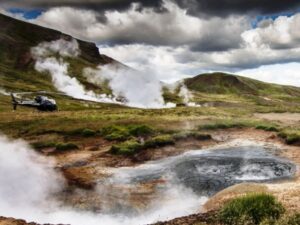 Meanwhile, I was doing my own plotting. Our ages are transposed – 18 and 81 — and so are our energy levels. I am way too claustrophobic to go into a cave of any kind, no matter how beautiful. My footing in too unstable to walk on ice, and even on an IMAGINARY RTW I can’t imagine wanting to drive a snowmobile. I wanted to see the countryside, especially the geothermals. But I didn’t want to sit on a bus with a lot of other tourists. “Listen to this,” I said. “Geothermal Iceland – Helicopter Tour. Geothermal pools, power plants, lava fields, craters & Reykjavik. Discover Iceland’s geothermal energy from the quiet and comfortable seat of a helicopter. Soar above the volcanic landscape, over geothermal pools and power plants, lava fields and craters. A brief landing to witness the raw, primeval energy rising up from the earth. Fly
Meanwhile, I was doing my own plotting. Our ages are transposed – 18 and 81 — and so are our energy levels. I am way too claustrophobic to go into a cave of any kind, no matter how beautiful. My footing in too unstable to walk on ice, and even on an IMAGINARY RTW I can’t imagine wanting to drive a snowmobile. I wanted to see the countryside, especially the geothermals. But I didn’t want to sit on a bus with a lot of other tourists. “Listen to this,” I said. “Geothermal Iceland – Helicopter Tour. Geothermal pools, power plants, lava fields, craters & Reykjavik. Discover Iceland’s geothermal energy from the quiet and comfortable seat of a helicopter. Soar above the volcanic landscape, over geothermal pools and power plants, lava fields and craters. A brief landing to witness the raw, primeval energy rising up from the earth. Fly  over the Hengill volcano, which is still active, as evidenced by numerous hot springs and fumaroles in the area. Stop here to see the hot springs, calcium-rich solfatara and boiling water running several feet under the earth’s surface, producing a multitude of steaming fumaroles all around. This volcano is an important source of energy for the country, which is utilized at the Nesjavellir and the Hellisheidi power stations, where groundwater is heated and distributed to the district. Our tour concludes after ascending over Reykjavik, with a great aerial overview of the colorful houses of the city.”
over the Hengill volcano, which is still active, as evidenced by numerous hot springs and fumaroles in the area. Stop here to see the hot springs, calcium-rich solfatara and boiling water running several feet under the earth’s surface, producing a multitude of steaming fumaroles all around. This volcano is an important source of energy for the country, which is utilized at the Nesjavellir and the Hellisheidi power stations, where groundwater is heated and distributed to the district. Our tour concludes after ascending over Reykjavik, with a great aerial overview of the colorful houses of the city.”
This is the one I Want! said Linda.
When we get back to our room tonight, what great stories we’ll have to share.
Iceland Day Tours https://adventures.is/iceland/day-tours/
» posted on Monday, August 15th, 2022 by Linda Lou Burton
Time Travel
Originally published by Linda Lou Burton posting about Reykjavik, Iceland from Little Rock, Arkansas – I made it to Reykjavik before dark last night. Way before dark, in fact, as the sun doesn’t set here until 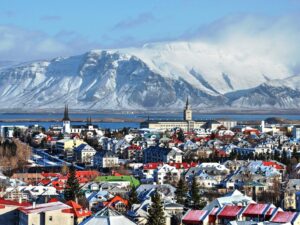 10 PM and I arrived at 7. And I only changed two time zones, so sleep patterns weren’t affected that much. Everything else was affected though; as anticipated – temperature was the first thing I noticed. Highs of 95 in Cairo, and throat-parching dry; it’s 57 here, and rainy this morning. But I like cool better than hot, and “cool with rain” is fairly normal for the kids, coming from Seattle. But their sleep-brain will surely take a hit! Iceland Air flies non-stop
10 PM and I arrived at 7. And I only changed two time zones, so sleep patterns weren’t affected that much. Everything else was affected though; as anticipated – temperature was the first thing I noticed. Highs of 95 in Cairo, and throat-parching dry; it’s 57 here, and rainy this morning. But I like cool better than hot, and “cool with rain” is fairly normal for the kids, coming from Seattle. But their sleep-brain will surely take a hit! Iceland Air flies non-stop 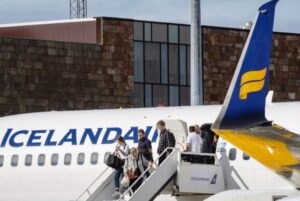 from Seattle to Reykjavik in 8 hours. And, Reykjavik time is 7 hours ahead of Seattle time. So do the math: if they got on their plane at 7 PM Sunday, it was 2 AM Monday in Reykjavik, and I was fast asleep. When I meet their plane at 10 this morning, their brain will likely be saying, “Leave me alone! It’s only 3 AM!”
from Seattle to Reykjavik in 8 hours. And, Reykjavik time is 7 hours ahead of Seattle time. So do the math: if they got on their plane at 7 PM Sunday, it was 2 AM Monday in Reykjavik, and I was fast asleep. When I meet their plane at 10 this morning, their brain will likely be saying, “Leave me alone! It’s only 3 AM!”
Or maybe they’ll be excited. Kayla was taken to the Philippines when she was a baby, but has no memories of that. And for Sam, it’s his first trip beyond US soil. They were both enthusiastic about my graduation-gift invite; pleased as punch, and (until COVID-19 shut us down and turned our trip into Now Defunct Imaginary) raring to go. Maybe it was the hype I sent them. After all, most people don’t know much about Iceland. Do you?
Reykjavik: Quick & Quirky Facts
- Reykjavik is the northernmost capital of a sovereign state in the world.
- Reykjavik is among the cleanest, greenest, and safest cities in the world.
- Reykjavik was the first permanent settlement in Iceland in 874 AD.
- Reykjavik means “smoky bay,” referring to the steam rising from the hot springs and geothermal vents.
- Reykjavik is the only Western European capital without a Starbucks or a McDonald’s.
- Reykjavik is the only capital city in the world that is home to a puffin colony.
- Reykjavik is mostly a cat city, as dogs were banned from 1924 to 1984.
- Reykjavik has a penis museum called the Icelandic Phallological Museum.
Quirky indeed! And after just leaving one of the most dangerous capital cities in the world, I must say I feel relaxed about bringing my grandkids to one of the safest. Iceland has been near the top of 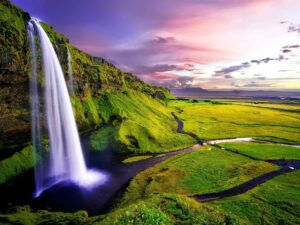 the list of safest countries in the world for decades and Reykjavik has topped the list of safest cities. The crime rate here is unbelievably low; scams, racism, homophobia, violence, and sexual harassment are almost nonexistent. Still, when most folks hear the word “Iceland” they imagine a cold, unfriendly place. Nothing could be further from the truth! It may lie almost within the Arctic Circle, but the North Atlantic Current warmed by Gulf Stream waters makes the climate of Iceland more temperate than most places with similar latitudes. And the easy-to-access scenery is stunning — waterfalls, glaciers, ice caves, volcanic peaks, geysers, geothermal pools, and the sea, so close.
the list of safest countries in the world for decades and Reykjavik has topped the list of safest cities. The crime rate here is unbelievably low; scams, racism, homophobia, violence, and sexual harassment are almost nonexistent. Still, when most folks hear the word “Iceland” they imagine a cold, unfriendly place. Nothing could be further from the truth! It may lie almost within the Arctic Circle, but the North Atlantic Current warmed by Gulf Stream waters makes the climate of Iceland more temperate than most places with similar latitudes. And the easy-to-access scenery is stunning — waterfalls, glaciers, ice caves, volcanic peaks, geysers, geothermal pools, and the sea, so close.
Things That May Surprise You On An August Visit
- Does the sun set in Iceland in August? From mid-May to mid-August the sun only sets for only a few hours per day, and it is effectively light for the whole 24-hour period.
- What does Iceland feel like in August? August is one of the warmest months of the year in Iceland. The average daily temperature hovers around 50-59°F, but it can leap up to 77°F.
- Is it worth going to Iceland in August? Absolutely! August is the perfect time to be visiting Iceland, especially if you like adventures, local events and outdoor activities.
- Can you see the northern lights in Reykjavik in August? The northern lights are visible in August, but since it never gets properly dark it’s the wrong time for good viewing.
- Do you need insect repellent in Iceland? Iceland is completely free of mosquitoes, and ants, though small midges thrive in the summertime, especially by lakes and streams.
- Are there any dangerous animals in Iceland? No, and there are no snakes in Iceland. Don’t bother the eggs in bird nests though, you may get pecked.
- What is a typical breakfast in Iceland? Yogurt, berries, fruit, eggs, cheese, bacon, sausage, fried potatoes, pancakes, sourdough bread, and Icelandic butter. Juice, coffee, tea.
- Do you need cash in Iceland? The currency in Iceland is the Icelandic króna (ISK). Many places take US dollars, but Icelanders usually pay for everything by credit or debit card.
- Is tipping in Iceland an insult? Tipping is not customary in Iceland. The server’s wages are sufficient and they don’t expect it. If you want to give someone a tip, by all means do.
 Tipping an insult! The server’s wages are sufficient! What a country! Well, it’s time to go to the airport to meet Kayla and Sam and see if they’re awake enough to have some fun. I’ve already sent them a list of 15 things to choose from. I expect food may be their first concern though. Since FISH takes up the most space on restaurant menus (and neither of them care for fish), they will be surprised to learn that the humble HOT DOG is so popular in Iceland it is the unofficial national food. Bill Clinton tried one when he was here!
Tipping an insult! The server’s wages are sufficient! What a country! Well, it’s time to go to the airport to meet Kayla and Sam and see if they’re awake enough to have some fun. I’ve already sent them a list of 15 things to choose from. I expect food may be their first concern though. Since FISH takes up the most space on restaurant menus (and neither of them care for fish), they will be surprised to learn that the humble HOT DOG is so popular in Iceland it is the unofficial national food. Bill Clinton tried one when he was here!
» posted on Sunday, August 7th, 2022 by Linda Lou Burton
Checking In On Reality
Originally published August 6, 2020 by Linda Lou Burton posting from Little Rock, Arkansas – A reality check today, before I talk about my wonderful visit to Abu Dhabi.
It is clear, I hope, that all my travel posts are strictly imaginary. Imaginary, however, only due to COVID-19. This was to be a full-fledged Round The World trip celebrating 81 years of life, 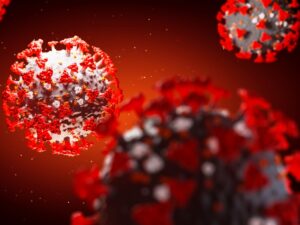 and I had booked all the hotels I mention in my posts, and selected all my flights. I carefully routed myself for the shortest in-air time possible, over the least amount of water. I’m not good at sitting in a tube with a belt buckled over my lap for more than six hours! So I meticulously planned.
and I had booked all the hotels I mention in my posts, and selected all my flights. I carefully routed myself for the shortest in-air time possible, over the least amount of water. I’m not good at sitting in a tube with a belt buckled over my lap for more than six hours! So I meticulously planned.
But “life happens while you’re making other plans” fell true this March, when world travel was shut down in a hurry. So I consoled myself by declaring I’d imagine the trip, and think myself there. I renamed it the Now Defunct Imaginary Round The World (NDI RTW), and I started writing. After Abu Dhabi I go to Cairo, and cruise the Nile; then Reykjavik, Iceland, the northernmost capital city in the world! Get it? Wellington, and Reykjavik? My two high-school-graduate grandchildren are (were) meeting me there, and then a flight to Washington, DC together for a rousing end to an RTW, and finally a grand celebration back in Little Rock.
As of this week, the Center for Disease Control reports 4,678,610 cases of COVID-19 in the United States.
The World Health Organization reports 18,614,177 cases of COVID-19 worldwide.
I checked on current travel restrictions in the countries on my RTW, info from the US State Department, the agencies within countries, and the airlines. Here goes:
New Zealand
The New Zealand borders are closed for all but critical travel — protecting public health in New Zealand is paramount. The travel ban applies to all arrivals into New Zealand whether it is by air or sea. To help stop the spread of COVID-19, people who do arrive in New Zealand are required to undergo either managed isolation or quarantine for at least 14 days. https://covid19.govt.nz/travel-and-the-border/border-restrictions/#border-entry-restrictions
Australia
Australia’s borders are closed. Only Australian citizens, residents and immediate family members can travel to Australia. Australian Border Force liaison officers will work with airlines at overseas airports to identify those who should not board flights to Australia. https://www.health.gov.au/news/health-alerts/novel-coronavirus-2019-ncov-health-alert/coronavirus-covid-19-restrictions/coronavirus-covid-19-advice-for-international-travellers#travel-into-australia
Thailand
Updated 01st of August 2020: The Civil Aviation Authority in Thailand decided to extend the restrictions concerning commercial flights arriving in Thailand (with some exceptions) until 31th of August 2020. https://www.thaiairways.com/en_SE/news/news_announcement/news_detail/coronavirus.page
United Arab Emirates
The UAE government announced travelers must have a negative COVID-19 test result before flying to the country. The National Crisis and Emergency Management Authority (NCEMA) said all travelers, including Emiratis, residents, tourists, and transit passengers, must have a negative COVID-19 PCR (nasal swab) test result within 96 hours in order to board commercial flights to the UAE. NCEMA said the new system will be in place August 1. However, there are reports Etihad and Emirates airlines began implementing this new regulation on July 24. https://ae.usembassy.gov/u-s-citizen-services/covid-19-information/
Egypt
As of the evening of August 5, there were 94,875 confirmed cases of Covid-19 and 4,930 deaths in Egypt. Egypt is implementing 14-day quarantine periods and other preventative measures in all cases. https://eg.usembassy.gov/u-s-citizen-services/covid-19-information/
Iceland
As of 31 July, passengers arriving in Iceland who intend to stay in Iceland for 10 days or more have to undergo 2 COVID tests. The first is at the border on arrival and the second by the primary healthcare service 4-6 days later. In between the two tests, special precautions need to be taken. https://www.icelandair.com/support/covid-19/faq
Washington DC
As of July 24, if you are out in DC, you are required to wear a mask, with a few exceptions for vigorous exercise or while you’re actively eating or drinking. A self-quarantine of 14 days is required after participating in non-essential travel to/from high-risk areas when returning or traveling to Washington, DC, beginning July 27. The list of high-risk states included in the Mayor’s order are below and are in effect until Monday, Aug. 10.
- Arkansas
- Arizona
- Alabama
- California
- Delaware
- Florida
- Georgia
- Idaho
- Iowa
- Kansas
- Louisiana
- Mississippi
- Missouri
- Montana
- Nebraska
- Nevada
- New Mexico
- North Carolina
- North Dakota
- Ohio
- Oklahoma
- South Carolina
- Tennessee
- Texas
- Utah
- Washington
- Wisconsin
There you have it.
» posted on Wednesday, August 19th, 2020 by Linda Lou Burton
Women, And Politics
 August 19, 2020, Linda Lou Burton posting from Little Rock, Arkansas – Iceland, a parliamentary representative democracy at the northern end of the globe, was the first country to have a female president, Vigdís Finnbogadóttir, elected in 1980. It also has the world’s first female and openly gay head of government, Jóhanna Sigurðardóttir, who was elected prime minister in 2009. Iceland has had a woman as either president or prime minister for 20 of the last 36 years. In the 2016 parliamentary election covering 63 seats, 30 women were elected.
August 19, 2020, Linda Lou Burton posting from Little Rock, Arkansas – Iceland, a parliamentary representative democracy at the northern end of the globe, was the first country to have a female president, Vigdís Finnbogadóttir, elected in 1980. It also has the world’s first female and openly gay head of government, Jóhanna Sigurðardóttir, who was elected prime minister in 2009. Iceland has had a woman as either president or prime minister for 20 of the last 36 years. In the 2016 parliamentary election covering 63 seats, 30 women were elected.
New Zealand, a constitutional monarchy with a parliamentary system of government at the southern end of the globe, was the first country in the world in which all the highest offices were occupied by women, between March 2005 and August 2006: the Sovereign Queen Elizabeth II, Governor-General Dame Silvia Cartwright, Prime Minister Helen Clark, Speaker of the House Margaret Wilson, and Chief Justice Dame Sian Elias. Currently Queen Elizabeth II continues as Head of State, Governor-General is Dame Patsy Reddy, Prime Minister is Jacinda Arden and Chief Justice is Dame Helen Winkelmann.
 There has never been a female President or Vice-President in the United States, a federal democratic republic. There has been one female major party presidential nominee in US history: Democrat Hillary Clinton in 2016. She was the first woman nominated for president by a major party, the first woman to participate in a presidential debate, and the first to carry a state in a general election. She won the popular vote in 2016, receiving nearly 66 million votes to Donald Trump’s 63 million.
There has never been a female President or Vice-President in the United States, a federal democratic republic. There has been one female major party presidential nominee in US history: Democrat Hillary Clinton in 2016. She was the first woman nominated for president by a major party, the first woman to participate in a presidential debate, and the first to carry a state in a general election. She won the popular vote in 2016, receiving nearly 66 million votes to Donald Trump’s 63 million.
There have been three female major party vice presidential nominees: Democrat Geraldine Ferraro in 1984, on the ticket with Walter Mondale; Republican Sarah Palin in 2008, on the ticket with John McCain; and Democrat Kamala Harris in 2020, on the ticket with Joe Biden.
Voting
Both Iceland and New Zealand rank in the World List of Voter Participation Top 10 , each averaging about 76% turnout. Others in the TOP 10 are Belgium, Sweden, Denmark, Australia, South Korea, Netherlands, Israel, and Finland. The United States ranks in the World List of Voter Participation Bottom 10, with 56% in the 2016 presidential election. Others in the BOTTOM 10 are Estonia, Luxembourg, Slovenia, Chile, Japan, Latvia, Poland, Mexico, and Switzerland.
August 26, 2020, marks the 100th anniversary of the passage of The Nineteenth Amendment, giving women the right to vote in the United States after 72 years of the largest civil rights movement in the history of the world.
THE WOMAN SUFFRAGE TIMELINE as complied in the LIZ LIBRARY is available for your review; read of the events that have transpired since 1776, when Abigail Adams first spoke up for “the ladies.” http://www.thelizlibrary.org/suffrage/
I offer only a few highlights regarding women’s efforts to be ALLOWED to vote.
1700s
 1776 Abigail Adams writes to her husband, John Adams, asking him to “remember the ladies” in the new code of laws. Adams replies the men will fight the “despotism of the petticoat.”
1776 Abigail Adams writes to her husband, John Adams, asking him to “remember the ladies” in the new code of laws. Adams replies the men will fight the “despotism of the petticoat.”- 1787 U.S. Constitutional Convention places voting qualifications in the hands of the states. Women in all states except New Jersey lose the right to vote.
1800s
- 1848 First Women’s Rights convention in Seneca Falls, New York. Equal suffrage proposed by Elizabeth Cady Stanton. After debate of so radical a notion, it is adopted.
- 1867 Fourteenth Amendment passes Congress, defining citizens as “male;” this is the first use of the word male in the Constitution. Kansas campaign for black and woman suffrage: both lose. Susan B. Anthony forms Equal Rights Association, working for universal suffrage. Suffrage Movement Divides Over Black v. Woman Suffrage.
- 1868 Fourteenth amendment ratified. Fifteenth Amendment passes Congress, giving the vote to black men. Women petition to be included but are turned down. Formation of New England Woman Suffrage Association. In New Jersey, 172 women attempt to vote; their ballots are ignored.
- 1870 Fifteenth Amendment ratified. The Grimke sisters and 42 other women attempt to vote in Massachusetts, their ballots are cast but ignored. Utah territory grants woman suffrage.
- 1878 Woman suffrage amendment first introduced in U.S. Congress.
- 1894 Despite 600,000 signatures, a petition for woman suffrage is ignored in New York.
1900s
- 1910 Washington (state) grants woman suffrage.
- 1911 California grants woman suffrage. In New York City, 3,000 march for suffrage.
- 1912 Teddy Roosevelt’s Progressive Party includes woman suffrage in their platform. Oregon, Arizona, and Kansas grant woman suffrage.
- 1913 Women’s Suffrage parade on the eve of Wilson’s inauguration is attacked by a mob. Alaskan Territory grants suffrage. Illinois grants municipal and presidential but not state suffrage to women.
- 1917 Beginning in January, NWP posts silent “Sentinels of Liberty” at the White House. In June, the arrests begin. Nearly 500 women are arrested, 168 women serve jail time, some are brutalized by their jailers. North Dakota, Indiana, Nebraska, and Michigan grant presidential suffrage; Arkansas grants primary suffrage. New York, South Dakota, and Oklahoma state constitutions grant suffrage.
- 1918 The jailed suffragists released from prison. Appellate court rules all the arrests were illegal. President Wilson declares support for suffrage. Suffrage Amendment passes U.S. House with exactly a two-thirds vote but loses by two votes in the Senate.
- 1919 In January, the NWP lights and guards a “Watchfire for Freedom.” It is maintained until the Suffrage Amendment passes U.S. Senate on June 4. The battle for ratification by at least 36 states begins.
And that battle ENDED in Tennessee on August 18, 1920, 100 years and 1 day ago. The story told by the guide when I toured the Nashville capitol was that young Harry T Burn from Niota gets credit for what happened that fateful day. At least, his mother does. The resolution had passed the Tennessee State Senate, but the vote in the House was close, in fact, on first vote it  did not pass. Harry’s mother, Febb Ensminger Burn, a prominent businesswoman, sent her son a note. After lunch, he changed his vote, then HID from the angry crowds, but that one vote was all it took. Tennessee was the 36th and final state needed for ratification and the 19th Amendment became law August 26, 1920.
did not pass. Harry’s mother, Febb Ensminger Burn, a prominent businesswoman, sent her son a note. After lunch, he changed his vote, then HID from the angry crowds, but that one vote was all it took. Tennessee was the 36th and final state needed for ratification and the 19th Amendment became law August 26, 1920.
Women, and Politics. Interesting.

